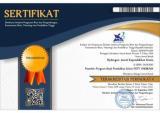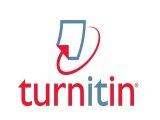Mercury Metal Absorption using Ethylene Diamine Tetraacetic Acid Intercalated Carbon
DOI:
https://doi.org/10.33394/hjkk.v11i5.10097Keywords:
metal absorption, mercury, silver craft waste, EDTA intercalated carbonAbstract
Silver craft waste contains hazardous metals, one of which is mercury metal. If high concentrations of mercury waste are disposed of without treatment, this waste seeps into the soil and pollutes residential water sources because mercury metal is difficult to decompose. Mercury poisoning can cause nerve reactions such as difficulty speaking, blurred vision, muscle weakness, paralysis, impaired sense of taste, and shortness of breath. This research was conducted as an effort to reduce mercury metal levels in silver craft waste in Central Lombok Regency. The method of waste treatment is by adsorption method utilizing carbon bagasse modified with EDTA. The first step is to first determine the level of mercury metal in silver craft wastewater in Central Lombok. Furthermore, wastewater is contacted with EDTA-intercalated bagasse carbon. Making intercalated carbon bagasse consists of 3 stages, namely first dehydration by burning bagasse until it turns into carbon, second carbonation is heating temperature 500ºC, carbon results are sifted 100-200 mesh and third, intercalation is by soaking 100 grams of carbon in 250 mL EDTA solution 10% stirred for 6 hours. After that the carbon is dried at a temperature of 50ºC. A total of 2 grams of intercalated bagasse carbon that has been made is put into 25 mL of wastewater samples. The sample was stirred at contact time variations of 30, 60, 90, 120 and 150 minutes using a stirer. The optimum time obtained is used to calculate the efficiency of reducing mercury metal levels, namely calculating the difference in mercury metal levels before adsorption and after adsorption using EDTA intercalated carbon baggase. Mercury metal levels were analyzed using an Atomic Absorption Spectrophotometer (SSA). From the study, it was found that the mercury metal content in the sample was 50.6398 ppb. The optimum contact time in mercury metal adsorption is at a contact time of 120 minutes which results in an optimum adsorption efficiency in mercury metal of 70.55%.
References
Apriliani. 2010. Pemanfaatan Arang dari Ampas Tebu Sebagai Adsorben Ion Logam Cd, Cr, Cu, dan Pb dalam Air Limbah. Skripsi. Jakarta : Universitas Islam Negeri Syarif Hidayatullah.
Bernhoft RA. 2012. Mercury Toxicity and Treatment : A Review of The Literature. Journal of Environmental and Public Health. 56 (1) : 46-56.
Farina M, Aschner M, Rocha JBT. 2011. Oxidative Stress in MeHg-induced Neurotoxicity.
Toxicology and Applied Pharmacology. 256(1) : 405-417.
Furieri L.B., Fioresi M, and Junior R.F.R. 2011. Exposure to Low Mercury Concentration in vivo Impairs Myocardial Contractile Function. Toxicology and Applied Pharmacology.255(2) : 193-199.
Handoko, C.T., Yanti, T.B., Syadiyah, H., dan Marwati, S. 2013. Penggunaan Metode Presipitasi Untuk Menurunkan Kadar Cu dalam Limbah Cair Industri Perak di Kotagede. Jurnal Penelitian Saintek. 18 (2) : 51-58.
https://travel.kompas.com/read/2017/05/24/15510540/Desa.Ungga.Sohor.karena.Kerajinan.Perak. Retrieved July 10, 2018.
Imelda,H., Silalahi, Zahara, T.A., dan Tampubolon, H.M. 2012. Kapasitas Adsorpsi
Merkuri Menggunakan Adsorben Sargassum Crassifolium Teraktivasi. Biopropal Industri.(1) : 28-38.
Indah, D.R. dan Hendrawani. 2017. Upaya Menurunkan Kadar Ion Logam Besi pada Air
Sumur Dengan Memanfaatkan Arang Ampas Tebu. Jurnal Ilmiah Pendidikan Hydrogen.5(2) : 68-74.
Jaguaribe, E.F., Medeiros, L.L., Barreto, M.C.S.,and Araujo,L.P. 2015. The Performance of Activated Carbons from Sugarcane Bagasse, Babassu, and Coconut Shells in
Kargi, F. and Cikla, S. 2016. Biosorption of Zinc (II) Ions Onto Powdered Waste Sludge
(PWS) : Kinetics and Isotherms. Enzyme and Micobial Technology. 38(5) : 705-710.
Kaur S., Walia T.P.S.,and Mahajan R.K. 2008. Comparative Studies of Zink, Cadmium, Lead, and Copper on Economically Viable Adsorbents. Journal Environ. Eng. Sci. 7 :1-8.
Manocha, S. M. 2013. Porous Carbons. Jurnal Sadhana. Vol. 28, part 1 dan 2.
Palar, H. 2012. Pencemaran dan Toksikologi Logam Berat. Jakarta : Rineka Cipta.
Roto, R., Indah, D.R., dan Kuncaka, A. 2015. Hydrotalsit Zn-Al-EDTA Sebagai Adsorben Untuk Polutan Ion Pb (II) di Lingkungan. Jurnal Manusia dan Lingkungan. 22 (2) : 226-232.
Selvi, K., Pattabhi S and Kardivelu K. 2011. Removal of Cr(VI) from Aqueous Solution by Adsorption Onto Activated Carbon. Bioresour Technol. Vol 80 : 87-89.
Shofa. 2012. Pembuatan Karbon Aktif Berbahan Baku Ampas Tebu dengan Aktivasi Kalium Hidroksida. Skripsi. Jakarta : Fakultas Teknik Kimia Universitas Indonesia.
Sulistyawati, S. 2008. Modifikasi Tongkol Jagung Sebagai Adsorben Logam Berat Pb (II). Skripsi. Bogor : FMIPA IPB.
Tandy, E., Fahmi, I., and Hamidah. 2012. Kemampuan Adsorben Limbah Lateks Karet Alam Terhadap Minyak Pelumas dalam Air. Jurnal Teknik Kimia. 1 (2) : 70-75.
Wahjuni, N.S., Danny, A., dan Desty, R. 2015. Perbandingan Tingkat Adsorpsi Chitin dan Karbon Aktif dalam Menjerap Logam Chromium dalam Tangki Berpengaduk. Seminar Teknik Kimia Fakultas Teknik UNS, Surakarta. Hal. 71-76.
Downloads
Published
How to Cite
Issue
Section
Citation Check
License
License and Publishing Agreement
In submitting the manuscript to the journal, the authors certify that:
- They are authorized by their co-authors to enter into these arrangements.
- The work described has not been formally published before, except in the form of an abstract or as part of a published lecture, review, thesis, or overlay journal.
- That it is not under consideration for publication elsewhere,
- That its publication has been approved by all the author(s) and by the responsible authorities – tacitly or explicitly – of the institutes where the work has been carried out.
- They secure the right to reproduce any material that has already been published or copyrighted elsewhere.
- They agree to the following license and publishing agreement.
Copyright
Authors who publish with Hydrogen: Jurnal Kependidikan Kimia agree to the following terms:
- Authors retain copyright and grant the journal right of first publication with the work simultaneously licensed under a Creative Commons Attribution License (CC BY-SA 4.0) that allows others to share the work with an acknowledgment of the work's authorship and initial publication in this journal.Â
- Authors are able to enter into separate, additional contractual arrangements for the non-exclusive distribution of the journal's published version of the work (e.g., post it to an institutional repository or publish it in a book), with an acknowledgment of its initial publication in this journal.
- Authors are permitted and encouraged to post their work online (e.g., in institutional repositories or on their website) prior to and during the submission process, as it can lead to productive exchanges, as well as earlier and greater citation of published work.
Licensing for Data Publication
Hydrogen: Jurnal Kependidikan Kimia uses a variety of waivers and licenses, that are specifically designed for and appropriate for the treatment of data: Open Data Commons Attribution License, http://www.opendatacommons.org/licenses/by/1.0/ (default) Other data publishing licenses may be allowed as exceptions (subject to approval by the editor on a case-by-case basis) and should be justified with a written statement from the author, which will be published with the article.










